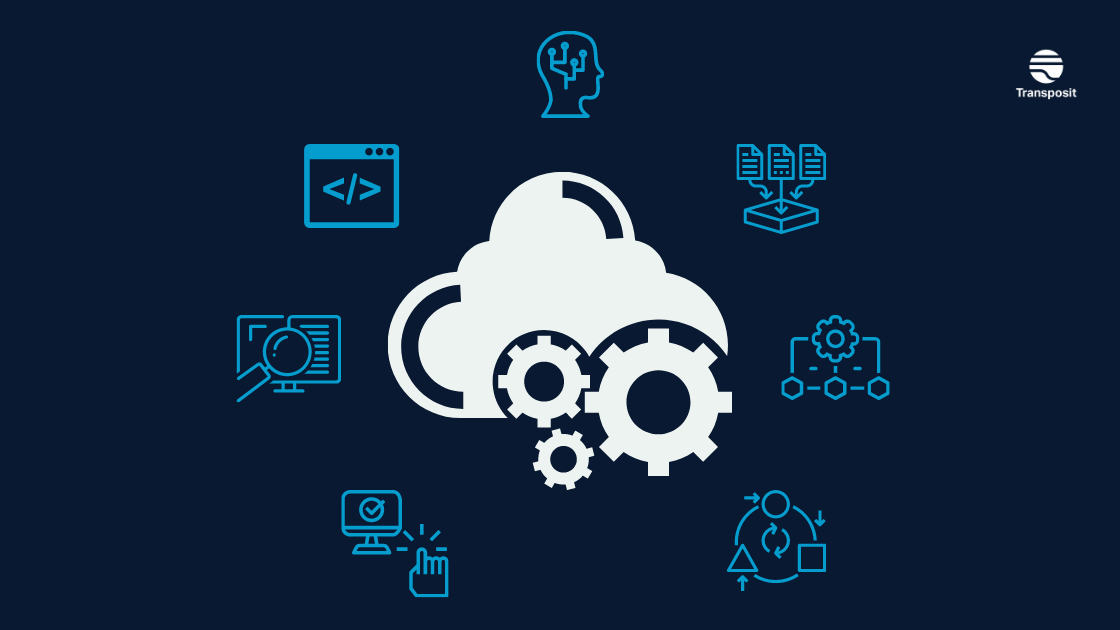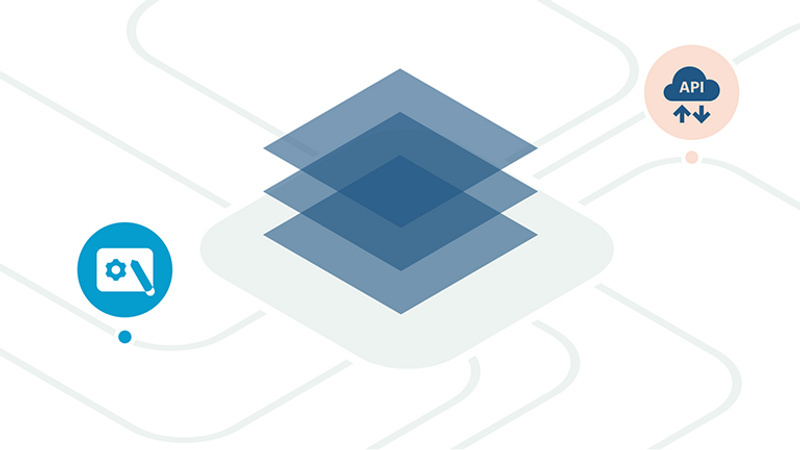7 Must-Haves in a Cloud Operations Integration Platform
How integration platforms can empower CloudOps teams to scale IaC practices, expand automation, and streamline processes

Whether born straight into the cloud or migrating their way over, organizations today are laser focused on what lies ahead: cloud operations. The shift towards cloud computing and how APIs are used for infrastructure have enabled teams to scale and innovate faster, but they’ve also added a great deal of complexity. This complexity is compounded by legacy tools and processes that aren’t keeping up with the needs of modern cloud operations.
New requirements must be met to enable agility, actionability, and scalability across cloud operations. Integration platforms need to have both the flexibility and power to enable CloudOps teams to manage infrastructure, expand automation, and streamline processes. Teams today require real-time data, highly flexible workflow automation, process controls and auditability, infrastructure automation, and adaptability to custom APIs.
There are five main types of integration platforms CloudOps teams can use: Extract, Transform, Load (ETL), Integration Platform as a Service (iPaaS), scripting, ITSM workflow automation tools, and DevOps process orchestration. While every platform has its advantages, not all are keeping up with the modern way of working for CloudOps teams. To truly get the full breadth of power needed to automate and scale processes, teams should consider the following seven elements.
Get the infographic: What’s Important in a Cloud Operations Integration Platform
1. Real-time data ingestion
Integration platforms using the ETL approach ingest data through batch processing, usually on an hourly or daily basis (however, modern ETL platforms can sync with data connectors in about five minutes), meaning data is hard to keep up to date and is not available in real time.
For CloudOps teams that need to gather data for context and take action in seconds, not minutes, real-time data ingestion is an absolute requirement. Similar to ETL, other types of integration platforms can ingest all the sources of data, from CI/CD to alerting. However, unlike ETL that ingests data in batches, they can ingest data in real time. Ideally, integration platforms offer integrations that work bi-directionally, enabling data to be pulled in or pushed out into connected systems.
2. No-code workflow automation
Every organization is looking for ways to automate time consuming tasks and processes. But most organizations have not taken full advantage of what automation can offer because of the complexity of workflow implementation and customization. Many organizations are investing a huge amount of development resources in customizing integration platforms and writing custom glue code—resources that organizations would rather put towards driving innovation and customer value.
To avoid this hurdle, orgs should invest in integration platforms that offer no-code workflow automation. Most integration platforms like ETL and ITSM workflow automation tools offer great low-code solutions to workflow automation. While low-code may seem like a good middle ground between code and no-code, it still presents challenges. It won’t provide the deep customization abilities that code gives while also excluding non-technical team members from customizing.
No-code solutions, however, enable non-engineers to customize software without writing a line of code. These tools usually have a user-friendly interface and drag-and-drop capabilities, allowing users to envision the implementation process and describe the overall logic with ease. iPaaS and DevOps process orchestration both offer no-code interfaces, enabling non-engineers to build and customize automated workflows and ensuring developers can use their time more efficiently and build just for the gaps.
3. Developer customization
Most organizations will have specific requirements that aren’t met with off-the-shelf platforms. Ultimately, the best solution will combine both a developer platform that is code-based with a no-code interface that can be used by people of any skill level. This not only enables non-technical people to participate but also reduces the time engineers need to spend on coding for smaller customizations and workflow automation.
A developer platform provides the extensibility that organizations need to customize integrations and workflows. Using common languages like Java, Go, PowerShell, C#, SQL, Python, or JavaScript, developers can modify or add to existing features and elements so that the platform is tailored for their requirements.
4. Infrastructure automation
CloudOps teams have adopted Infrastructure as Code practices to manage cloud infrastructure, and many teams use tools like Terraform to automate these processes. However, they typically require specialized skills in the tooling and the infrastructure to execute operations securely and properly. DevOps process orchestration platforms enable engineering and operations teams to move faster—with assurance—by enabling self-service infrastructure through automated workflows that provide guardrails.
Operations teams are able to create guardrails for configuration management processes through workflows that take input from the user, get data from another system, and dynamically generate code—ultimately ensuring that the state of infrastructure is as expected before making any modification.
Scripting platforms are another great solution for infrastructure automation. A do-it-yourself alternative, developers can build infrastructure automation workflows to their exact requirement. However, it’s important to take into consideration the amount of development resources required to build these workflows from scratch.
5. Auditability and process controls
Operations today is moving faster than ever—actions are spread across dozens of tools with different teams and humans making changes at any given time. This can make keeping a detailed audit trail of what happened and by whom is more difficult than ever. But teams are behooved to put this detail at the forefront of their processes. Auditability and process controls not only ensure compliance, but are also the gateway to continuous improvement. Without any record of how problems were solved, teams lose the opportunity to learn, analyze, and improve over time.
Process controls shouldn’t be synonymous with command and control. Rather, process controls can look like guardrails for workflows, ensuring that operators less experienced in the tool or process have less room for error and can more easily execute a task.
6. Human data capture
Often neglected in many integration platforms, the ability to capture human data along with machine data ensures teams have the full context of how processes were carried out. All integration platforms capture actions of machines—a graph was pulled from Datadog, an alert triggered from Pagerduty, etc. But few attach these actions to the human behind the action. This is because connecting machine actions with the specific human operator requires identity to be baked into the platform, pulling in data from disparate sources while respecting the identity and permissions of the human viewing that data.
When automation runs on behalf of specific humans, it preserves the fidelity of information in the integration platform regardless of who pulled in the data from what source. This allows teams to continue to manage and respect access to that data outside of its source. An important part of this equation is the granularity of identity across integrations. Platforms that only enable team authentication for integrations can be problematic. If an integration is connected through a team login, teams lose the visibility and audit trail of which individual took action. The ideal solution is a platform that enables teams to use the same integration while identifying who specifically is taking action.
7. Adaptability to custom APIs
The continuous change of CloudOps processes and tooling mean APIs will change just as rapidly. Hard-coded integrations or difficulty creating new connectors and integrating with custom APIs will be a source of ongoing pain.
Integration platforms like DevOps process orchestration, scripting, and iPaaS help manage and handle the complexity of APIs so that users only need to focus on the intent, not the mechanisms of how to handle custom APIs. These platforms manage and seamlessly handle identity, authentication, pagination, and caching. Using open and standards-based methods, these platforms simplify the work of creating connectors and integrating new tools and services, whether they are off-the-shelf or built in-house.
Dig deeper
Learn more about what DevOps and CloudOps teams need in an integration platform and a full breakdown of the different approaches in our eBook: Not All Integration Platforms Are Built the Same.
Get the infographic: Share a bite-sized snapshot of this blog with your team.
Related Articles

Digital Transformation and Why Integration Platforms Are on the Rise

What DevOps Teams Need in an Integration Platform, Part 1: Customization

What DevOps Teams Need in an Integration Platform, Part 2: API Developer Experience

